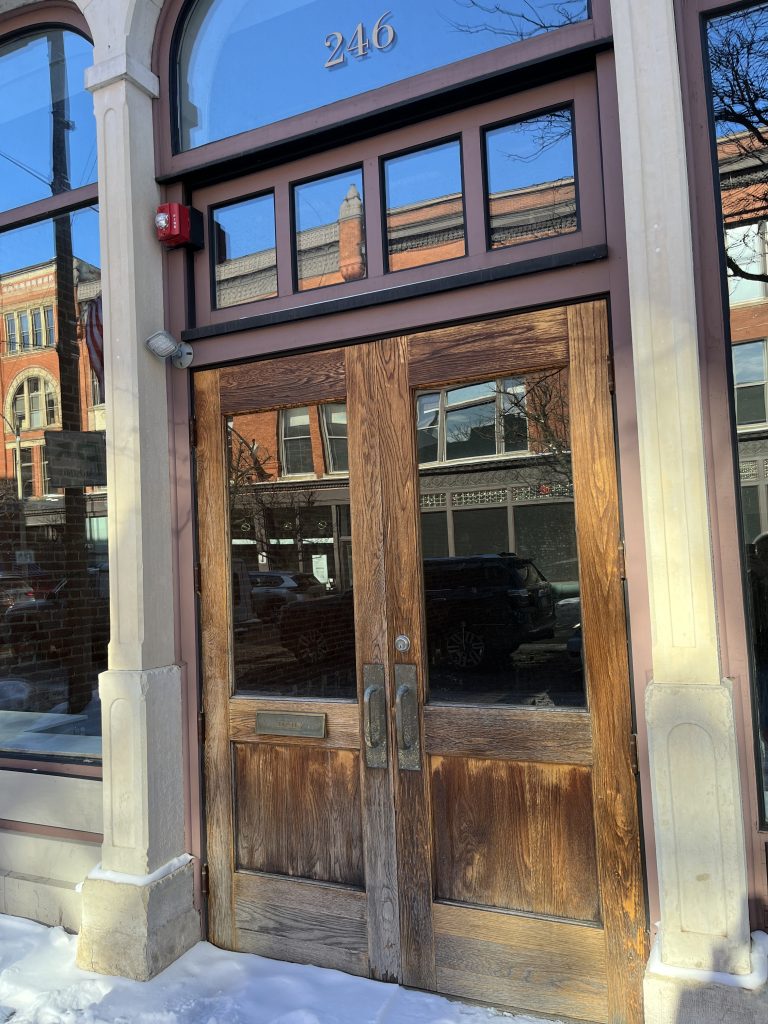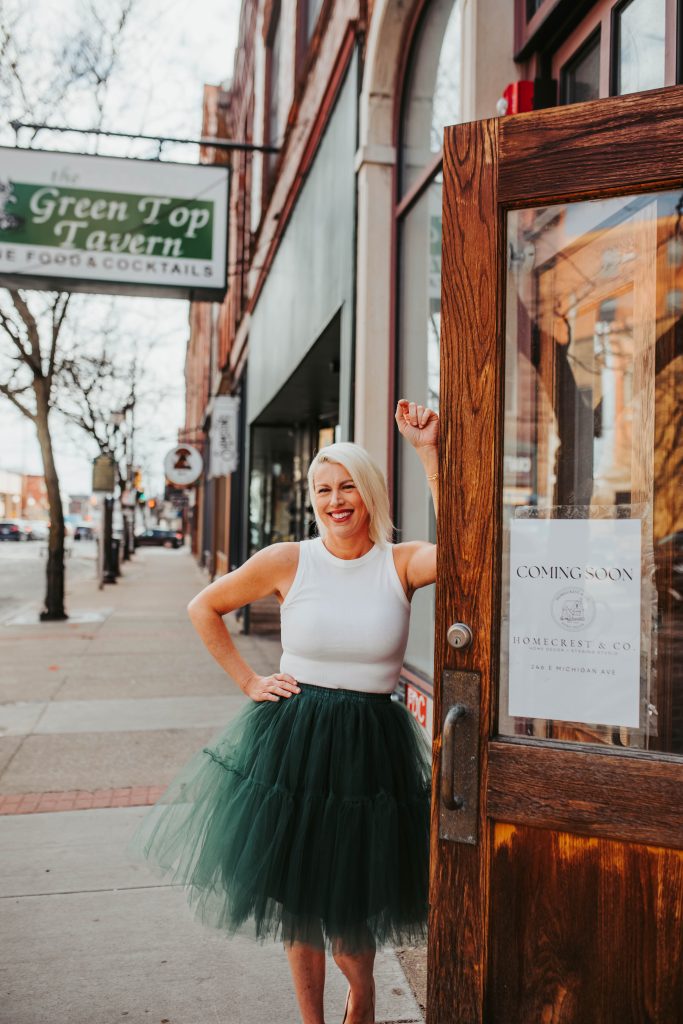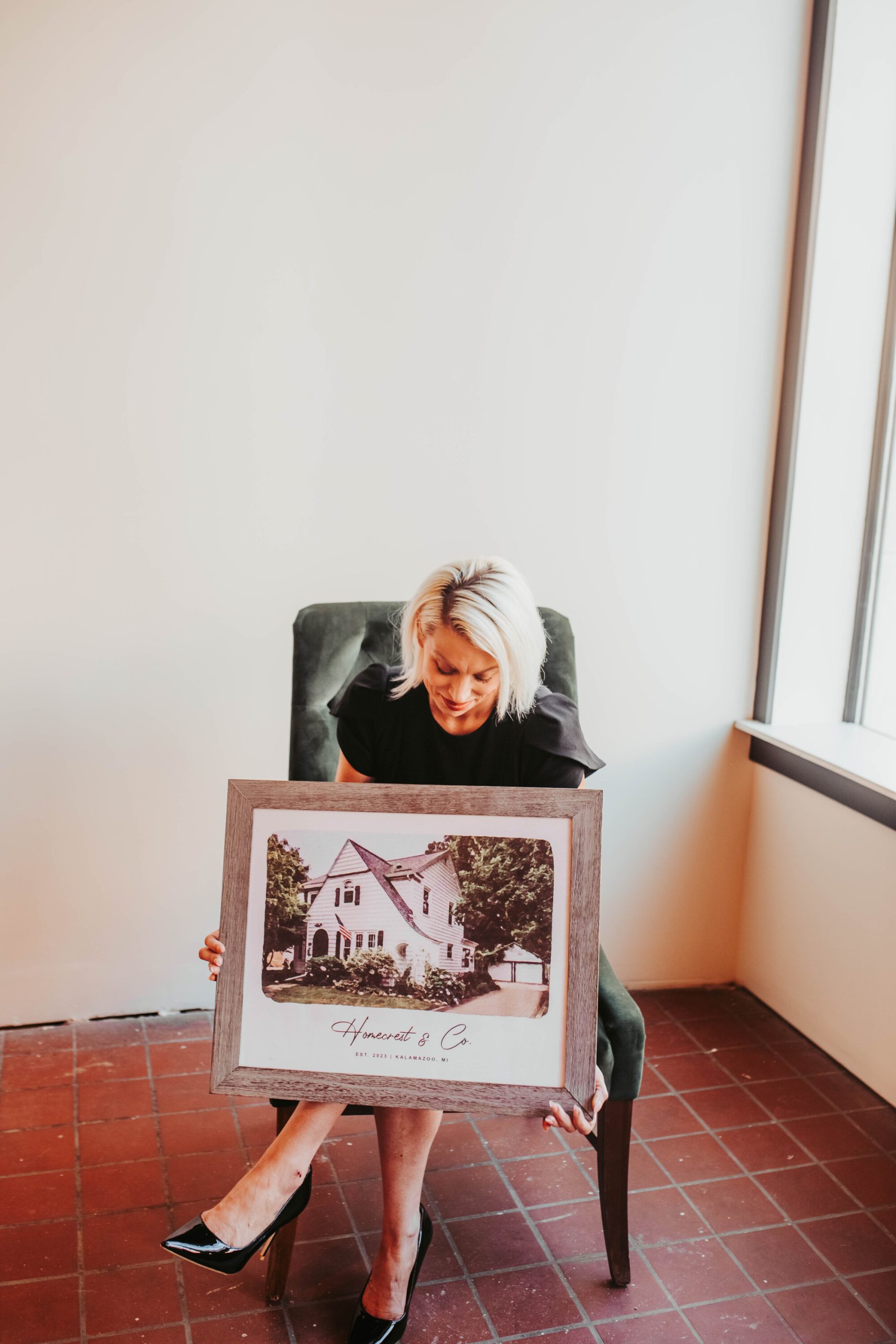Jennifer L. Dayton
Founder, The Kalamazoo Justice Project
January – March 20, 2025
Once Christmas was over, the screaming in the hallways, the police lights outside my window, and the shouting from apartment 317 had mostly subsided. I hoped the worst had passed. New Year’s Eve was quiet, and for a moment, I believed things might finally settle down. Maybe the building would start to feel like home.
But peace at the Creamery was always short-lived. The tension from Christmas Day did not dissipate; it merely hid, waiting for another opportunity to reveal itself. By the first week of January, it returned. What happened next shattered any sense of safety I had left and revealed how deep the problems in this building and its system really were.
The Knife Incident
It was just after 7 p.m. on a cold Sunday evening when my daughter asked to go downstairs to the gym on the second floor. Things seemed quiet, so I said yes. My son and I were in our third-floor apartment when suddenly I heard pounding on the door of apartment 317 and a teenage voice yelling, “Open up! Open up! They came up here to kill Trey!”
The words echoed down the hallway. I didn’t know who Trey was. Later, I learned he was one of the minors connected to Gloria, my next-door neighbor. However, the panic in that boy’s voice made my heart stop.
Then I heard Jaron, Gloria’s adult son who lived in apartment 313 down the hall, shouting for help: “Somebody in 316 or 318, call 911!”
I started searching for my phone and realized it was in the car. Inside my apartment, my little boy was terrified. I could hear feet running, doors slamming, and shouting. A fourteen or fifteen-year-old who lived with that family, the same minor who had cornered me in a stairwell a week prior, had made sexual advances toward me, came into the hallway shirtless, holding a steak knife. Through my peephole, I could see him waving it as if daring someone to come closer.
A man I didn’t recognize, maybe in his mid-twenties, somehow gained access to the building and began shouting threats at the minor and others in the third-floor hallway. The scene was chaos, filled with yelling and screaming.
My daughter was still downstairs on the second floor, and I didn’t know if she would walk right into it. I locked the door behind me, ran through the chaotic hall, down to my car, grabbed my phone, and called 911 from the back parking lot. When I returned, I was shaking. As I stepped back into the hallway, my fear turned into fury. I began shouting at everyone in the hallway. I don’t even remember the exact words, just that they came from deep frustration – “I’m sick of this! I’m so sick of this shit!”
Within minutes, four or five KDPS (Kalamazoo Department of Public Safety) officers arrived. I ran down to let them in and said, “I just moved here. I was told this place was safe; this is anything but safe.” They looked at me and all smirked, as if the danger was obvious and I was naïve for not knowing.
That interaction with the KDPS stayed with me for a long time, serving as a reminder of the chaos I had moved into.
Harassment Begins
The very next morning, I filed my first formal complaint with property management. I detailed the incident, explained the severity of the situation, and made it clear that I felt unsafe. Later that day, during his therapy session, my son described to his therapist what he had heard and felt the night of the knife incident, words that no child should ever have to say.
COMPLAINT #1 EMAIL NOTICE - January 6, 2025
COMPLAINT #1 to Property Management - January 6, 2025
However, instead of addressing the danger, management focused their attention on me. Within 24 hours of my complaint, notices started appearing on my door, filled with court language and demands for money I did not owe. The court form that made no sense, as I had just moved into my unit less than 30 days prior.
False NON-PAYMENT OF RENT Notice #2 - January 13, 2025
EMAIL NOTICE NON PAYMENT OF RENT - January 17, 2025
Days later, I walked into the lobby and came face-to-face with Jaron. He spoke quietly at first, accusing me of “calling the cops” on his family and claiming it was my fault that he and his mother were being evicted. I reminded Jaron that his minor relative had made sexual advances toward me in the corridor of the stairwell closest to the Portage Street side of the building, and I had never reported that. I was not the one responsible for getting him and his mother (units 302 and 317) evicted. I told him that if I wanted to get them evicted, I would have reported that incident, but I didn’t. Jaron had previously told me to call 911.
The confrontation was brief, but the message was clear: I felt I was being watched. The harassment did not stop; it continued in the hallways. The people in unit 317, who had once been just background noise, had become a daily source of intimidation and fear.
The Murder Connection
And then came the detail that changed everything.
I learned that another tenant, one of Gloria’s sons, had been charged in connection with the fatal shooting of another alleged tenant on November 9, 2024, at Howard’s liquor store down the street from The Creamery. Just twelve days later, on November 21, 2024, I toured The Creamery for the first time and was repeatedly assured that the building was safe.
WOODTV News Report – November 13, 2024
Later, I found out through court records that Jasper Hopkins, the suspected murderer, was listed as a tenant in the building. Months later, on January 27, 2025, a Non-Payment of Rent notice was filed to initiate his eviction. This indicated that management was aware of his identity and the situation. Despite this, they assured me that the building was “safe housing.”
KALAMAZOO CREAMERY V HOPKINS CASE DETAILS - January 27, 2025
Five days after a violent incident, the new property manager, Josi Leger-Moreno, sent her first newsletter to the tenants. Rather than addressing issues of violence, police presence, or safety, the focus was on marijuana use in the building. Signs were posted, meetings were held, and threats were made regarding this matter. However, when it came to tenants’ safety? There was silence.
Creamery Newsletter - January 10, 2025
As I read the murder article, holding the newsletter in my hand, I felt sick. I had sold my home and moved my family into a building where chaos wasn’t just tolerated—it was enabled.
Dreams Collapsing Under Pressure
Amid all of this turmoil, I was desperately trying to create a better future. Homecrest & Co. was meant to be my chance at stability, an opportunity to provide my children with something better.
On January 14, I withdrew my offer for a retail space in downtown on the S. Kalamazoo Mall. It was a prime location with significant potential, but the constant stress stemming from the Creamery made it clear that I couldn’t manage this lease successfully. I was juggling intimidation, harassment, and daily violence, both inside and outside the building.
The next day, on January 15, I finalized the sale of my home on Homecrest Avenue. That house, located in Milwood, a middle-class neighborhood in Kalamazoo, had been the foundation of my stability. Selling it provided me with equity and a chance to rebuild. The check I held was not just money; it represented my second chance. Yet as I deposited it, I couldn’t shake the sinking feeling that I had traded stability for a nightmare.
Email Withdrawing Lease Offer – January 14, 2025
A Building That Turns on You
By late January, harassment had become a routine issue. Management stopped addressing my safety concerns, and the neighbors in unit 317 continued their troubling behavior throughout the building without any consequences.
On January 21, I reported the incident of sexual harassment involving a minor who didn’t even live on the property. Days later, I emailed Bonnie Ray, the regional manager of KMG Prestige Property Management, to request a meeting regarding my escalating concerns. However, before the meeting could take place, I decided to cancel. It had become clear that no one intended to protect me or my children.
On January 29, I submitted my 30-day notice to vacate. I had invested thousands to move in, and I had nowhere else to go. I didn’t want to give up, but emotionally and financially, I felt trapped. This was the first time I informed property management in writing that I was self-employed, highlighting the ongoing disruptions and poor move-in conditions that had begun to significantly impact me financially.
30-Day Notice to Vacate – January 29, 2025
EMAIL NOTICE W/ 30-DAY NOTICE TO VACATE - January 29, 2025
Mold, Lies, and Breaking Points
February brought new challenges and betrayals. I reported a growing mold problem in my unit. Management scheduled a visit, but then claimed they had stopped by, but “no one was home.” I reminded her that we had discussed in detail over the phone: I had informed her I would not be home and had specified where the mold was located. This lie wasn’t just insulting; it revealed a troubling pattern. Verbal conversations became excuses to evade accountability, leading me to refuse their phone calls from that point on.
RESCHEDULE MAINTENANCE VISIT EMAIL - February 5, 2025
WASHER SERVICE REQUEST FORM - February 14, 2025
On February 12, during a routine doctor’s appointment, I informed my primary care doctor that I no longer felt safe at home. The unsafe living conditions, constant police presence, and unresolved mold issue were still affecting me. Additionally, on February 14, my washer broke down, leaving wet clothes trapped for days. As a result, my mental health was deteriorating.
Despite everything, I kept moving forward. On February 1, I signed a commercial lease for a storefront at 246 E. Michigan Avenue, with a projected grand opening scheduled for April 4. However, the reality was much darker. When I filmed the podcast for Furniture Success, I wore headphones to drown out the noise from the hallway and the screaming from next door. The instability in my home life was seeping into my work every day.

Photo Credit: Jennifer L. Dayton | Kalamazoo, MI
Public Face vs. Private Hell
In early March, a podcast episode with host Ahmet Yavuz was released, in which I discussed optimistic content regarding the store. I had completed most of the interior painting and shared progress videos, and shared progress that illustrated how my vision was coming to life.
But at home, my 13-year-old daughter was followed through the hallways by a man who repeatedly asked her invasive questions. This was the second time she had been harassed since we moved in.
When she told me what had happened, I felt a part of me break. I could endure harassment and intimidation, but when my daughter became a target of complete strangers, I realized the damage was no longer mine alone to bear.
By mid-March, I was forced to withdraw from a local business networking group where I had been briefly serving as Social Media Marketing Manager. I had been eager about that opportunity, but the weight of living at the Creamery made it impossible to continue.
Business Group Withdrawal Email
The Final Straw
By March 20, the weight of it all became unbearable: the harassment, violence, unsafe living conditions, intimidation, lies, repeated sexual misconduct, and the silence from those who were supposed to protect us. It was consuming every aspect of my life.
This situation was destroying the business I had worked so hard to build for the past two years. I had sold my home for a dream that now felt out of reach, and I had signed a commercial lease while fighting to feel secure in my own apartment.
Reflection – It Was Never Just a Building
By the end of March, I began to realize something I hadn’t noticed before: the Creamery was never just a building. It was a system—one built on silence, intimidation, and control. Management continuously ignored safety concerns, police visits became routine, and violence was normalized. Tenants like me were left to fend for ourselves.
This story isn’t only about bad neighbors or broken appliances; it’s about how fragile the line is between stability and collapse, and how quickly everything unravels when those entrusted with our safety abandon their responsibility.
The cracks in the foundation weren’t just in the walls; they were in the system itself. Those cracks would continue to widen in the months to come, bringing with them harassment, health hazards, and new forms of misconduct that would make the next chapter even harder to tell.
Jennifer L. Dayton
Founder & Executive Director
Kalamazoo Justice Project, Inc.
The Kalamazoo Justice Project is a nonprofit organization dedicated to exposing housing injustice and supporting tenants through advocacy, transparency, and truth.
BLOG 5: EVIDENCE FILE
All exhibits, complaints, emails, incident reports, news articles, and social media documentation referenced in this story are available here:
BLOG 5 – EVIDENCE FILE (G Drive)
Legal Disclaimer: The views expressed in this article are based on publicly available information, cited sources, and the author’s lived experience. This content is provided for informational and educational purposes only. It does not constitute legal advice. All individuals and organizations named are referenced in the context of their public roles and responsibilities.
Main Photo Credit: Photograph by Washburn Photography, capturing the origins of Homecrest & Co. in Downtown Kalamazoo, Michigan.
Media Links
Furniture Success Podcast with Ahmet Yavuz (Full Podcast Episode) — Published March 4, 2025

Photo Credit: Washburn Photography | Kalamazoo, MI

Leave a Reply